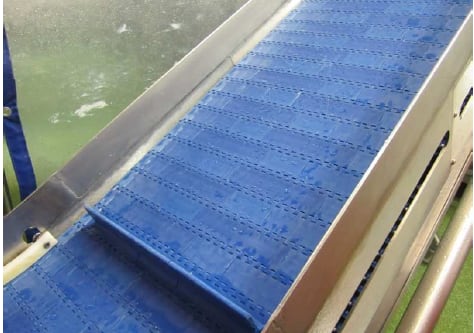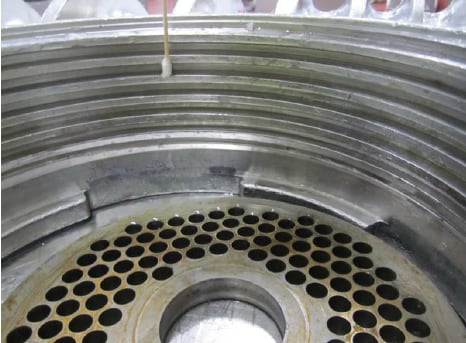The Food Standards Agency (FSA) and the Department for Environment, Food and Rural Affairs (Defra) commissioned a research project to assess whether carry-over of meat species occurs and, if it does, at what concentrations.
The horse and pork meat in processed beef products scandal raised questions including whether carry-over, i.e. involuntary contamination of meat species occurs during industrial production of items prepared according to good manufacturing practice (GMP).
LGC findings
The Laboratory of the Government Chemist (LGC) was awarded the project and found that when produced according to GMP, a deep chemical clean or a high pressure water wash between species prevents carry-over of raw pork into raw beef but no cleaning between species means significant carry-over can occur.

There is no legal obligation for food manufacturers to clean equipment when changing a meat processing line from one red meat species to another so mince, e.g. pork, beef and sheep can be run on the same line on the same day without cleaning in between species, said the agencies.
Although there are many points during the meat processing process that could give rise to the carry-over of meat species, it was agreed that the mincing stage was the step that had the greatest potential risk for gross contamination.
The carry-over of pork into beef was studied as these species are the most commonly minced.
A reporting limit of 0.1% raw pork in raw beef was established but it was found that a limit of detection (LOD) of 0.03% raw pork meat in raw beef was achievable.
No pork was detected in the 12 samples at the single species, beef only, plant confirming that any pork detected during the other experiments was due to contamination during the mincing process rather than of the input meat itself.
Two quantitative real time PCR kits were used: one for the analysis of carry-over of raw pork in raw beef meat samples and the other for swab samples to test for the presence of pork.
1032 beef samples and 390 swab samples were analysed.
Two phase project
Phase one was in a commercial pilot plant under controlled conditions and phase two trials were in three working UK commercial plants and both focussed on raw pork carry-over into raw beef mince.
Phase one results showed that deep chemical cleaning and cleaning with high pressure water of industrial mincing equipment and conveyor belts in line with GMP were effective in preventing carry-over of pork meat into beef – findings confirmed in phase two.

When no cleaning was carried out between species processing, both phases showed that significant carry-over of pork meat into beef meat does occur but the level of carry-over was different.
In the pilot plant study carry-over of pork into beef was most significant in the first 0.75kg of meat where the concentrations ranged from 99% to 54% pork.
Estimated pork carry-over in the 100kg of beef processed in the pilot plant trial was 653g (0.65%), whilst the estimated pork carry-over for tests in a commercial plant was 11.2kg in 200kg (5.6%).
“The difference in the estimated pork carry-over between pilot plant and commercial plant studies is thought to be due primarily to the differences in the mincing equipment used, e.g. size, age, complexity, potential traps points…This indicates that the amount of carry-over will vary from plant to plant based on the equipment and processes used,” said the report.
Cleaning effectiveness
To check the effectiveness of deep chemical and water wash cleaning in commercial meat plants adenosine triphosphate (ATP), protein and DNA swabs were taken.
After deep chemical cleaning the three swabs gave negative results but after water wash one positive protein swab result and several very high ATP results were obtained.
“However, no carry-over was observed in any of the beef samples taken after a water wash demonstrating that it is an effective cleaning method, with regards to preventing carry-over, for equipment which is readily accessible and can be easily dismantled,” said the report.
Unless it is important to monitor effectiveness of cleaning with respect to proteins, e.g. in plants producing allergen-free food or to individual meat species, e.g. Kosher / Halal plants, then protein and DNA swabs offer no further advantage to ATP and cost more.
The study recognised that other species were not looked at so claims could not be made, it is not known if the other equipment would add significant carry-over, equipment design, age and variety were not studied and heavily processed retail products (ready meals) were not included.
To support the guidance, further work could include effects of different species/fat content on the LOD/LOQ, effect of processing on the LOD/LOQ and inter-laboratory comparison to confirm that a LOD of 0.1% is achievable using different kits across laboratories.
